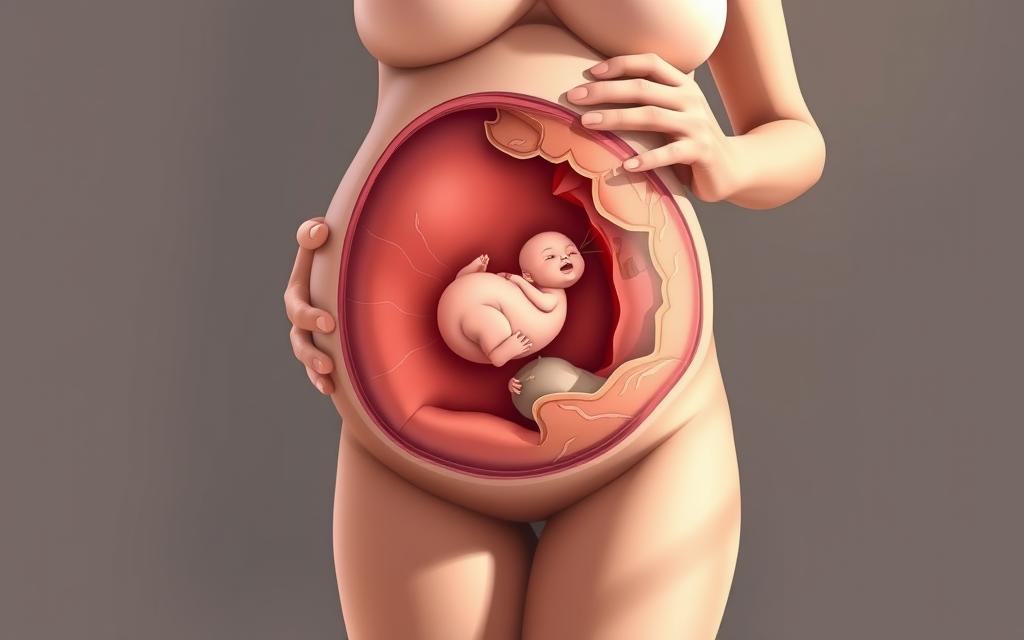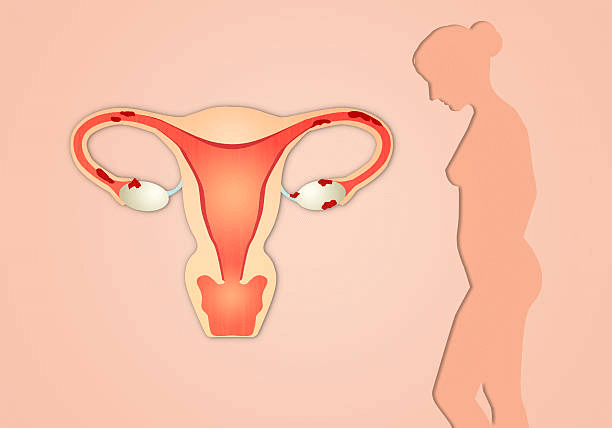Navigating the Stages of Labor: What to Expect

As you get ready for childbirth, knowing the stages of labor is key. It makes your experience positive and empowering. The Mayo Clinic says labor is unique, and knowing its stages prepares you well. Understanding these stages can greatly improve your experience.
As you go through labor, knowing what to expect is important. From the start to the end, having knowledge is empowering. Labor has several phases, like early labor, active labor, and the transition phase. Knowing these can help you prepare for the changes in each stage.
Key Takeaways
- Understanding the stages of labor can help prepare expectant parents for a positive and empowering experience.
- The stages of labor include early labor, active labor, and the transition phase.
- Each stage of labor has its own unique characteristics and physical and emotional changes.
- Knowledge of the labor stages can help you feel more confident and in control during childbirth.
- Understanding the stages of labor can also help you prepare for the postpartum period and the care of your newborn.
- The stages of labor are a natural process, and understanding them can help you have a more positive and empowering experience.
Understanding the Signs of Early Labor
As you get closer to labor, knowing the early signs is key. It helps you get ready for what’s to come. The labor journey can be unpredictable, but knowing the physical and emotional signs can help a lot.
The Mayo Clinic says early labor brings mild contractions. These might feel like menstrual cramps or back pain. You might also see a bloody show, which means your body is getting ready for labor. You might feel anxious or excited too, as you wait for your baby to arrive.
Common Physical Symptoms
Here are some common physical signs of early labor:
- Mild contractions that may feel like menstrual cramps
- Back pain or a general feeling of discomfort
- A bloody show, which can be a sign that your body is preparing for labor
Emotional Changes to Expect
Early labor can also bring emotional changes, such as:
- Anxiety or excitement as you anticipate the arrival of your baby
- Nesting behavior, which can include a sudden urge to clean and prepare your home for the baby
When to Contact Your Healthcare Provider
It’s important to know when to call your healthcare provider during labor. If you notice any of these, reach out:
- Contractions that become more frequent or intense
- A significant change in discharge or bleeding
- Any concerns or questions you may have about what to expect during labor
By understanding early labor signs and knowing when to call your healthcare provider, you can smoothly move into the next stages of labor. This can make your labor experience positive.
Preparing Your Body and Mind for Labor
As you get closer to giving birth, it’s key to get your body and mind ready. The Mayo Clinic says drinking lots of water and eating well are important. Also, having someone you trust by your side can offer comfort and support.
Techniques like deep breathing, massage, and moving around can ease early labor. The American College of Obstetricians and Gynecologists (ACOG) suggests practicing these during pregnancy. This can boost your confidence and lower your stress levels.
Here are some important tips for preparing for labor and delivery:
- Drink plenty of water to stay hydrated
- Eat a diet full of nutrients
- Practice deep breathing and relaxation
- Have a support system ready
- Know what to expect in each stage of childbirth
Getting your body and mind ready for labor can make the experience better. Be ready to adjust to how your labor goes. With the right mindset and preparation, you can face childbirth with confidence.
The First Stage of Labor: Early Labor Phase
Understanding the different stages of labor is key. The first stage is the longest, lasting from 0 to 4 cm dilation. It’s split into early and active labor phases. In early labor, contractions get stronger and more frequent, and the cervix starts to open.
It’s important to recognize and time contractions. You might feel back pain, cramping, and see a bloody show. Watching for these signs helps you know when labor is getting closer.
Recognizing Contractions
Contractions feel like strong menstrual cramps. As labor goes on, they get more intense and last longer. Timing them is vital to track your labor’s progress and spot any problems.
Timing Your Contractions
To time contractions, note when they start and end. This shows how long and how often they happen. Use a stopwatch or app to make it easier.
Coping Techniques for Early Labor
There are ways to handle early labor. Try breathing exercises, warm baths, and walking. These can help you relax and feel less pain. Also, drink water and eat light to keep your energy up.
Knowing about labor progression and signs is key to a good labor experience. By recognizing and timing contractions, and using coping methods, you can manage your labor. This helps you stay focused on welcoming your baby.
Understanding the Stages of Labor: What to Expect During Each Phase
As you get ready for your baby’s arrival, knowing the stages of labor is key. Labor is split into three main labor stages, each with its own traits. Understanding what happens in each labor phase can ease your worries and boost your confidence.
The first stage of labor is split into early and active labor. Early labor can last from 6 to 12 hours, with contractions 5 to 15 minutes apart. Active labor usually takes 4 to 8 hours, with contractions every 3 minutes.
Some important things to remember about the labor stages include:
- The second stage of labor, starting at 10 centimeters dilation, can last from 30 minutes to several hours.
- Contractions during the second stage occur every 2 to 5 minutes, lasting approximately 60 to 90 seconds.
- The third stage of labor, involving the delivery of the placenta, usually lasts no longer than 20 minutes.
Knowing the labor phases and what to expect can greatly improve your labor experience. Being informed helps you and your support team prepare better. This leads to a more positive and empowering experience.
Active Labor: The Main Event
As you move through the labor process, you’ll hit active labor. This is the most intense part of childbirth stages. Your cervix will open from 4 to 7 centimeters. Contractions will get stronger and happen more often.
You might feel back pain, nausea, and the need to push. Knowing about the physical changes and pain management options can help you cope with active labor.
The Mayo Clinic says labor and delivery can be tough, but being ready can help a lot. You can try epidurals, nitrous oxide, or breathing methods to manage pain. Moving around and changing positions can also help with pain and moving labor along.
Talking to your healthcare provider before labor is key. They can help you choose the best pain relief for you.
- Contractions will become more frequent and intense, lasting around 60-90 seconds and occurring every 3-4 minutes.
- You may experience back pain, nausea, and the urge to push.
- Pain management options, such as epidurals or breathing techniques, can help manage discomfort.
- Changing positions and movement can help progress labor and reduce pain.
Remember, every woman’s active labor is different. It’s important to be flexible and adjust as needed. By knowing about the physical changes and pain management options, you can face active labor with confidence. And get ready for your baby’s arrival.
Transition Phase: The Most Intense Stage
As you move through labor progression, you’ll hit the transition phase. It’s the most intense part of labor. Here, labor signs and symptoms get stronger. Contractions get closer and last longer.
This phase means you’re almost done with the first stage of labor. Soon, you’ll start pushing.
Some key things about the transition phase include:
- Contractions that are very close together, lasting up to 90 seconds
- Extremely intense contractions that require focus and breathing techniques to cope
- A short duration, typically lasting between 15 minutes to 1 hour
Having a support system is key during this phase. This includes your healthcare provider and any extra support people. They can help you stay focused and offer emotional support.
By knowing what to expect, you can manage the labor signs and symptoms better. This prepares you for the pushing stage that comes next.

Remember, the transition phase is a sign you’re getting closer to holding your baby. Stay focused, breathe, and trust in your body’s ability to get through this intense but short stage of labor progression.
The Second Stage: Pushing and Birth
When you start the second stage of labor, you’ll feel the need to push. This stage can last from a few minutes to hours. It’s intense, but with the right support, you can get through it.
Your healthcare team will teach you how to push effectively. They might suggest squatting, kneeling, or lying down to help. The Mayo Clinic says trying different positions can help you find what works best.
- Listen to your body and push when you feel like it.
- Work with your healthcare team to find the best positions and techniques.
- Stay calm and focused, using deep breathing and relaxation.
Knowing about the childbirth stages can make you feel more ready. Remember, every birth is different. By being flexible and working with your team, you can confidently bring your baby into the world.
The Role of Your Support Person During Labor
Having a support person during labor can greatly improve your experience. They offer emotional support and help communicate with doctors. Knowing how they can help in each labor phase makes you feel more ready and in charge.
Your support person can ease the physical and emotional pain of labor. They can give massages, teach breathing techniques, and offer reassurance. It’s important to talk about what you need before labor starts.
Essential Support Tasks
- Providing physical comfort and emotional support
- Communicating with healthcare providers
- Helping with breathing techniques and relaxation methods
- Advocating for your needs and preferences
Communication Tips
Good communication is key during labor. Your support person should tell doctors what you need. This way, you get the best care possible.
Having a support person can make labor more positive and empowering. By knowing their role, you’ll feel more ready and supported through each labor stage.
Medical Interventions You Should Know About
During labor and delivery, medical help might be needed for mom and baby’s safety. Knowing about these interventions can help you make choices. The childbirth stages Abbreviated are complex. Interventions like epidurals, forceps, and cesarean sections might be used. The Mayo Clinic says they’re key in some cases.
Some common medical interventions include:
- Epidural anesthesia for pain relief
- Forceps or vacuum extraction to assist with delivery
- Cesarean section for complications or fetal distress
Talking to healthcare providers before labor is vital. The labor and delivery process can be unpredictable. Knowing about medical interventions can reduce anxiety and make the experience better. Understanding the childbirth stages and medical needs helps you make informed decisions.
As you get ready for labor and delivery, talk openly with your healthcare provider. Discussing medical interventions is key. Being informed and prepared helps you face the labor process with confidence and have a positive experience.
The Third Stage: Delivering the Placenta
As you move through the labor stages, knowing what to expect is key. The third stage, where you deliver the placenta, usually happens within 30 minutes after your baby’s birth. This step is vital for a safe delivery.
Your healthcare provider will watch over you and guide you through this stage. The time it takes can vary, but it’s usually between 5 to 30 minutes. Breastfeeding can help by releasing oxytocin, which helps your uterus contract.
Be aware of possible issues like too much bleeding or if the placenta stays inside. Your healthcare provider will work to prevent these problems. They might use oxytocin to help your uterus contract. Sometimes, a midwife will gently pull on the umbilical cord to help deliver the placenta.
- Breastfeeding can help reduce bleeding and keep your baby’s blood sugar right.
- Waiting a bit before cutting the umbilical cord can be good for your baby.
- Managing the third stage well can lower the risk of serious bleeding.
Understanding the labor stages and labor phases helps you navigate the labor process safely. Always talk to your healthcare provider and ask questions if you’re unsure.
Your First Hour After Birth
Understanding the first hour after birth is key. It’s a time for bonding and care, starting your baby’s healthy journey. The labor and delivery stages may end, but their impact lasts.
The Mayo Clinic says skin-to-skin contact and breastfeeding are essential. They help keep your baby calm and secure. Healthcare providers also do important checks, like weighing and measuring.
Here’s what you can expect in your first hour:
- Skin-to-skin contact to promote bonding and regulate your baby’s body temperature
- Breastfeeding to provide essential nutrients and promote a sense of calm
- Initial assessments, such as weighing and measuring your baby
This first hour is special for you and your baby. Knowing its importance can make it even more memorable. The labor and delivery stages may be over, but they’ve set the stage for this moment.
Conclusion: Embracing Your Labor Journey
Starting your labor journey is a big step. Knowing the stages of labor helps you feel ready and strong. Each labor phase has its own challenges and wins. Learning about the labor stages lets you move through it with confidence.
Being a first-time parent or not, facing the unknown with courage is key. Every labor is different, and being flexible can make it more enjoyable. Trust your body and your support team. Always talk to your healthcare providers. With the right mindset, your labor will be empowering and fulfilling.






